A group of young German and Italian students met in Castelnuovo Berardenga in Tuscany for eight days of intensive digging into a dark chapter of the local German-Italian history: The German massacre at the end of World War II. Read the impressions by Lanrianna Peters (17).
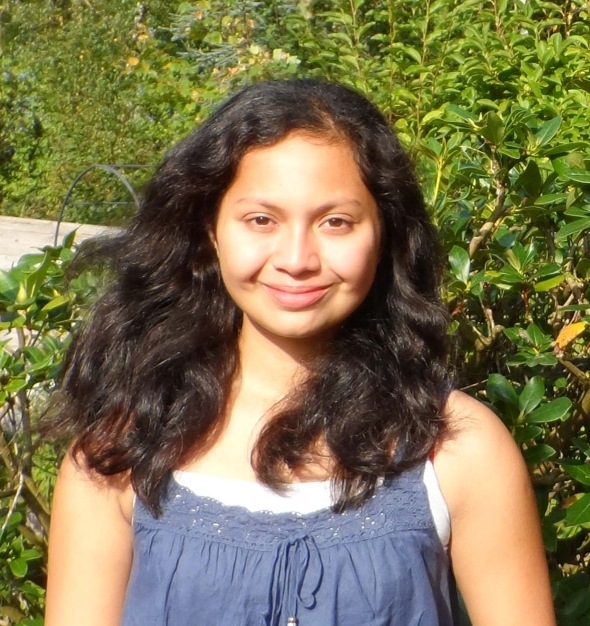
Lanrianna Peters born 1997 Germany | Photo: L. Peters
Benito Mussolini, who had allied himself with Adolf Hitler in 1939, was ousted in 1943 and Italy surrendered to the Allies. As a consequence, in the summer of 1944, 10,000 partisans and civilians were killed by SS soldiers and by German Armed Forces on Italian terrain.
Now, 70 years later, those atrocities are commemorated. On this occasion, the Koerber Foundation, in cooperation with other partners, organised a bi-national EUSTORY History Camp in Castelnuovo Berardenga in Tuscany, Italy. From 28 June to 6 July, eight German and four Italian teenagers met to deal with this sensitive issue.
For a better (cross-national) communication and understanding, two translators were available: Marie and Daniella. Both assisted us immensely and translated incessantly for us as everybody should speak in their native language so that everyone could gain an individual and personal connection to the topics and themes.
Meeting Grand-children of SS Soldiers
“What significance does remembrance have for us? Why is it important to remember WWII?” Those questions accompanied us throughout the week. We therefore had to draw one story about a wartime experience from our own family memory / experience. Hereby, the memory of WWII was revived and we compared our stories. Furthermore as homework, we had to choose one historical monument from WWII. Our task was to present different methods used for commemorating WWII in general. Kerstin von Lingen, an historian from Heidelberg, gave an introduction into the commemorative culture in accordance to the “Army Postal Services” (letters sent home by soldiers).
We were confronted with the commemorative culture every day, for example on Monday: We visited the historians-convent in Villa Chigi and prepared questions for the different interviews with contemporary witnesses.
A fellow-participant, Valentina, described what we experienced during the encounter with five Italian contemporary witnesses who survived the massacre as children. “At 9.30 a.m., we walked to the Palazzo Chigi to listen to the stories of eye witnesses. They were interviewed as part of the public conference. Later, a larger group of children and grand-children of SS soldiers joined us. The atmosphere during this meeting was amazing, as they shared their experiences without any hesitation. They also invited us to visit Civitella and Sant’Anna di Stazzema and offered to be our guides in their museum. After they left, we were too tired to do any other work and needed a break and some minutes to drink a coffee“.
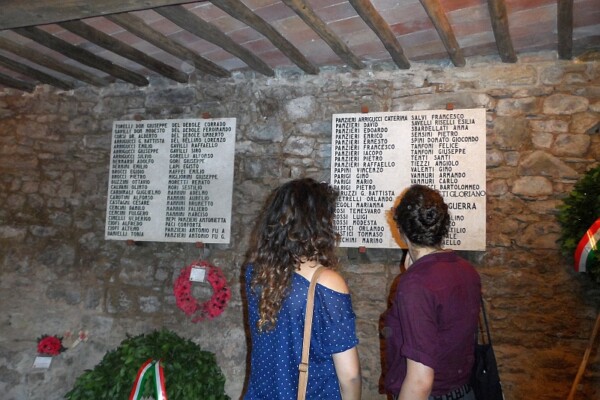
San Pancrazzio | Photo: L. Peters
„Not Every German is a Nazi“
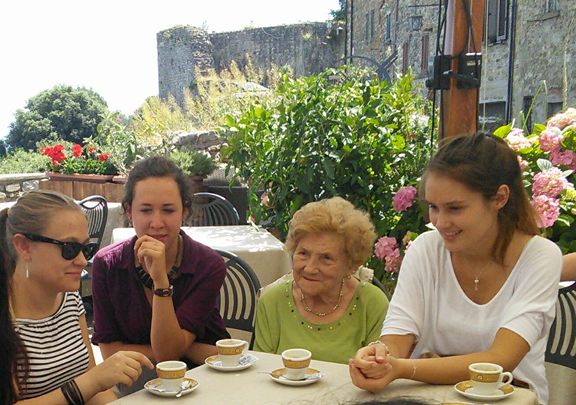 During the excursion on Thursday, we visited Civitella and San Pancrazzio, two cities in which many innocent civilians were killed. By coincidence, we met Mr. Sextro, one of our interviewees whose father was a SS-soldier. In San Pancrazzio, we met Enzo, whose family members were victims of the massacre. He voluntarily told us about his family and the memory of different citizens who experienced the tragedy. It is said that the majority of the victims have forgiven the Germans – “Not every German is a Nazi”. Enzo, for instance, made a symbolic gesture, when he left arm in arm with Mr. Sextro, which symbolizes forgiveness.
During the excursion on Thursday, we visited Civitella and San Pancrazzio, two cities in which many innocent civilians were killed. By coincidence, we met Mr. Sextro, one of our interviewees whose father was a SS-soldier. In San Pancrazzio, we met Enzo, whose family members were victims of the massacre. He voluntarily told us about his family and the memory of different citizens who experienced the tragedy. It is said that the majority of the victims have forgiven the Germans – “Not every German is a Nazi”. Enzo, for instance, made a symbolic gesture, when he left arm in arm with Mr. Sextro, which symbolizes forgiveness.
In Civitella, the hospitality on the part of the Italians was very welcoming. Maffalda, Vittoria and Ida, whom we had interviewed earlier, cooked for us and even presented us with a book. Furthermore, the Mayoress of Civitella, accompanied and talked to us during lunch. The invitation to eat together with them surprised as well as pleased us all and made our hearts leap with joy. This excursion illustrated the theoretical part we had already dealt with. We visited two museums, the church in Civitella, where a church service were held before the massacre, and we drove the same route as the Germans had driven.
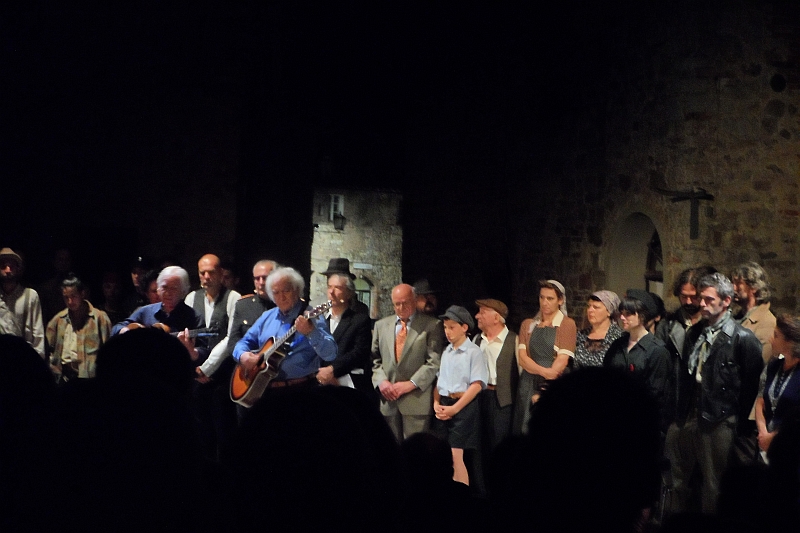
Albicocche Rosse | Photo: Lanrianna Peters
German and Italian Actors Together on Stage
On Friday, we conducted a survey about the war crimes. Shockingly, my group`s finding was that whether young or old – they knew almost nothing. To add the finishing touch to the project, we watched the play “Albicocche rosse”. The play was written and staged by a small group of German and Italian directors and put on stage with both German and Italian actors as a contribution to the local commemoration activities reflecting the massacre. It was a great performance with an extraordinary atmosphere and a very special pleasure especially for the participants who understood Italian.
“The seminar has been an interesting example of sharing historical knowledge”, says Francesco Grassi. The student from Bologna University accompanied the group for the four days. “An enriching experience, that brings history outside the books and the classrooms.”
We were all happy and thankful for having this great overwhelming opportunity!
“Albicocche Rosse”, Italian and German website: http://www.albicocche-rosse.de/ EUSTORY-report of the History Camp: http://eustory.org/yesterdays-network-news-2014-detail/items/tuscany-1944-2014.html


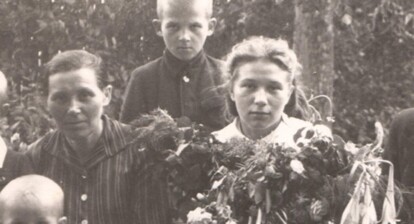
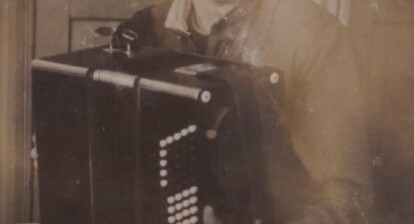

Philippa
Great Report, Lanrianna! .. And a good reminder if a great Project, Thanks! Pip
Pingback: Experiencia de la academia -Toscana 1944 / 2014 | Eustory | Concurso de historias para jóvenes